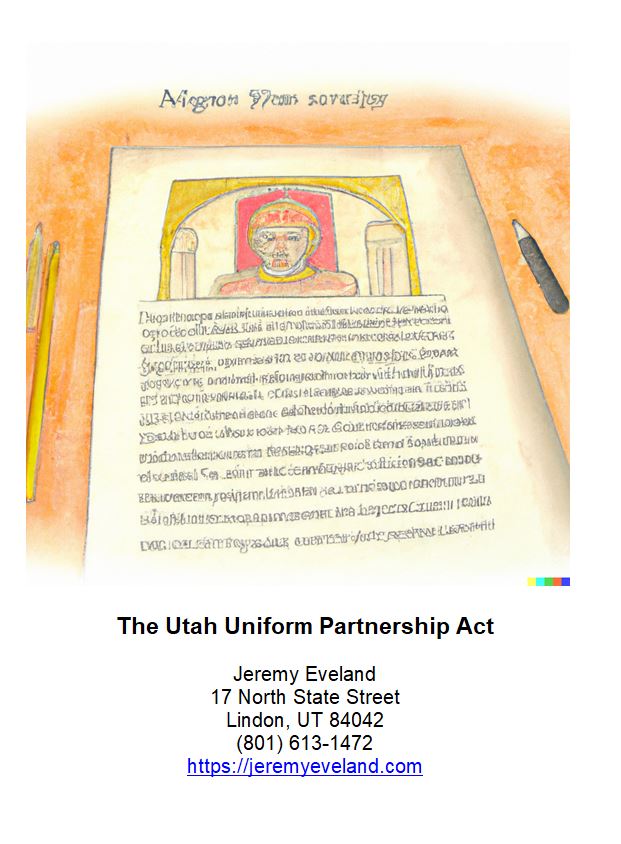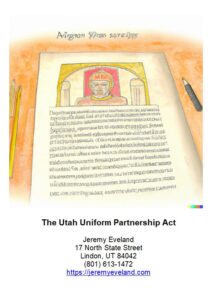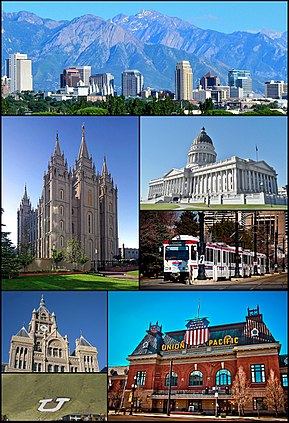When it comes to navigating the legal landscape, understanding your fiduciary duties is essential. In Utah, fiduciary duties are a set of legal obligations that one party owes to another in a professional or personal relationship. Whether you are a trustee, executor, agent, or guardian, it is crucial to have a clear understanding of your responsibilities and the potential ramifications for breaching these duties. In this article, we will explore the concept of Utah fiduciary duties, address common concerns, provide guidance, and ultimately empower you to make informed decisions. So, let’s dive in and shed light on what it means to fulfill your fiduciary duties in Utah.
What Are Fiduciary Duties?
When it comes to managing someone else’s affairs, it is important to understand and uphold certain responsibilities known as fiduciary duties. These duties are legal obligations that require individuals in positions of trust to act in the best interest of those they serve. Fiduciaries are expected to prioritize the welfare of others over their own personal interests, ensuring transparency and accountability in their actions. Whether you are a trustee, director, attorney, or financial advisor, understanding the nature and significance of fiduciary duties is essential to fulfilling your role effectively.
Definition of Fiduciary Duties
Fiduciary duties encompass a set of legal and ethical obligations that individuals must adhere to when managing assets or making decisions on behalf of others. These duties require fiduciaries to act in good faith, exercise skill and care, and avoid conflicts of interest. Fiduciary duty is based on trust and confidence, and the breach of these duties can carry significant legal consequences.
Importance of Fiduciary Duties
Fiduciary duties play a crucial role in ensuring the proper management and protection of assets. By placing the interests of others above their own, fiduciaries foster trust and confidence in the individuals or organizations they serve. These duties help prevent abuse of power, mismanagement of funds, and other unethical behaviors. Upholding fiduciary duties is not only a legal obligation but also a moral imperative to act with integrity and safeguard the well-being of those who rely on your judgment.

Who Has Fiduciary Duties?
Various roles and positions involve fiduciary duties. Here are some examples:
Trustees
Trustees are entrusted with managing and administering trusts for the benefit of beneficiaries. They have a fiduciary duty to act in the best interest of the beneficiaries and follow the terms of the trust.
Directors and Officers
Directors and officers of corporations owe fiduciary duties to the company and its shareholders. They must make decisions that promote the best interests of the company and its stakeholders.
Attorneys
Attorneys have a fiduciary duty to act in the best interest of their clients, maintaining confidentiality and providing competent and diligent representation.
Financial Advisors
Financial advisors, such as investment managers or brokers, owe fiduciary duties to their clients. They must prioritize the client’s financial well-being and provide suitable advice and recommendations.
Executors and Administrators
Executors and administrators of estates have fiduciary duties to manage and distribute estate assets according to the wishes of the deceased and in the best interest of the beneficiaries.
Types of Fiduciary Duties
Fiduciary duties can vary depending on the specific role and jurisdiction. While the exact responsibilities may differ, there are common types of fiduciary duties that most individuals in positions of trust must uphold:
Duty of Loyalty
The duty of loyalty requires fiduciaries to act in the best interest of those they serve and avoid conflicts of interest. Fiduciaries must prioritize the interests of the beneficiaries and not engage in self-dealing or acts that could compromise their duty.
Duty of Care
The duty of care obligates fiduciaries to exercise reasonable care and skill in carrying out their responsibilities. This includes making informed decisions, conducting due diligence, and seeking professional advice when needed.
Duty of Disclosure
Fiduciaries have a duty to provide accurate and timely information to those they serve. This includes disclosing all relevant facts, risks, and conflicts of interest so that the beneficiaries can make informed decisions.
Duty of Confidentiality
Fiduciaries are entrusted with sensitive information and must maintain the confidentiality of such information. This duty extends beyond their tenure and requires them to protect the privacy and interests of those they serve.
Duty of Prudence
The duty of prudence requires fiduciaries to act with reasonable care and caution. They must exercise sound judgment, consider relevant factors, and make decisions that a prudent person would make under similar circumstances.
Duty of Fairness
Fiduciaries must act impartially and fairly, avoiding any favoritism or discrimination. They must ensure that all beneficiaries or stakeholders are treated equitably and that their rights are protected.
Duty of Obedience
Some fiduciaries, particularly trustees, have a duty to follow the terms and instructions outlined in the governing documents, such as trusts or wills. They must abide by the wishes and intentions of the settlor or testator.
Duty of Accountability
Fiduciaries have a duty to keep accurate records, maintain documentation, and provide an account of their actions when required. They must be transparent and open to scrutiny, demonstrating their accountability in fulfilling their duties.
Fiduciary Duties in Utah
In Utah, fiduciary duties are governed by both statutes and common law principles. The Utah Uniform Trust Code (UUTC) provides a comprehensive framework for trust administration, while common law decisions and interpretations further shape the application of fiduciary duties in the state.
Utah Statutes and Common Law
The Utah Code includes provisions related to fiduciary duties for various roles, such as trustees, directors, and attorneys. These statutes outline the expected standards of conduct and consequences for breach of fiduciary duties. Additionally, common law principles established through court decisions provide guidance and interpretation in specific cases.
Role of the Utah Uniform Trust Code
The UUTC is a significant legal framework governing the administration and operation of trusts in Utah. It sets forth the duties and responsibilities of trustees, including the duty of loyalty, duty of care, and duty of impartiality, among others. The UUTC also provides guidelines on trust investments, accounting, and distribution of trust assets.
Interpretation and Enforcement in Utah
The interpretation and enforcement of fiduciary duties in Utah can vary based on the specific circumstances and legal precedents. Courts rely on statutes, case law, and equitable principles to determine whether a breach of fiduciary duty has occurred and to determine the appropriate remedies for such breaches. Seeking legal advice and guidance from an experienced attorney can help navigate the complexities of fiduciary duties in the state.
Personal Liability for Breaching Fiduciary Duties
When fiduciaries fail to fulfill their obligations, they can face personal liability for their actions or inactions. Breaching fiduciary duties can result in legal consequences and the imposition of various remedies to rectify the harm caused.
Legal Consequences
Breaching fiduciary duties can result in civil lawsuits filed against the fiduciary. Courts may order the fiduciary to compensate the affected parties for any losses suffered due to the breach. In some cases, criminal charges and penalties may be applicable if the breach involves fraud, embezzlement, or other illegal activities.
Remedies for Breach
The legal remedies available for breach of fiduciary duties depend on the nature and extent of the breach. Possible remedies include monetary damages, injunctive relief to prevent further harm, removal of the fiduciary from their position, and disgorgement of any profits gained.
Damages and Penalties in Utah
In Utah, courts have the authority to award compensatory damages to aggrieved parties as a result of fiduciary breaches. The amount of damages awarded can vary based on the specific circumstances and the extent of harm suffered. Additionally, courts may impose punitive damages, interest, and attorneys’ fees in cases involving malicious or intentional misconduct.

Avoiding Breach of Fiduciary Duties
Preventing breaches of fiduciary duties is essential to maintain trust, protect assets, and avoid legal repercussions. Here are some strategies for avoiding breaches:
Educating and Training
Fiduciaries should stay updated on the latest laws, regulations, and ethical standards relevant to their role. Regular education and training programs can enhance their understanding of fiduciary duties and help them make informed decisions.
Establishing Clear Policies and Procedures
To ensure compliance with fiduciary duties, it is important to establish clear policies and procedures. These guidelines should outline expectations, conflict-of-interest protocols, decision-making processes, and mechanisms for accountability.
Maintaining Documentation and Records
Keeping accurate records and documentation of all activities related to fiduciary duties is crucial. This includes financial statements, communications, meeting minutes, and any other relevant information. Proper documentation can serve as evidence of prudent actions and transparency.
Seeking Legal Advice and Guidance
When in doubt about fiduciary responsibilities, fiduciaries should seek legal advice from qualified attorneys who specialize in fiduciary law. Attorneys can provide guidance, review actions for compliance, offer risk assessment, and help navigate legal issues that may arise.
Common Issues and Challenges
While fiduciary duties aim to protect the interests of those being served, challenges and issues can arise. It is important to be aware of these potential pitfalls and take proactive measures to address them.
Conflicts of Interest
Conflicts of interest occur when fiduciaries have personal interests that may compromise their ability to act in the best interest of those they serve. Identifying and managing conflicts of interest is crucial to maintain the integrity of fiduciary duties.
Self-Dealing
Self-dealing refers to situations where fiduciaries benefit personally from transactions or decisions made on behalf of others. Fiduciaries must avoid self-dealing and act solely in the interests of those they serve.
Improper Use of Assets
Fiduciaries must use the assets entrusted to them for the intended purposes and in accordance with the applicable laws and regulations. Any improper use or diversion of assets may constitute a breach of fiduciary duties.
Mismanagement of Funds
Proper financial management is essential for fiduciaries. Mismanagement of funds, such as commingling assets, inadequate recordkeeping, or failure to invest prudently, can lead to breaches of fiduciary duties.
Fraud and Misrepresentation
Engaging in fraudulent activities or misrepresenting facts is a serious breach of fiduciary duties. Fiduciaries must always act honestly, disclose material information truthfully, and avoid misleading others.

Fiduciary Duties in Different Situations
Fiduciary duties can vary depending on the specific role and context. Here is an overview of the fiduciary duties associated with different positions:
Fiduciary Duties of Trustees
Trustees have a duty to manage trust assets with care and skill, act in the best interest of the beneficiaries, avoid conflicts of interest, and follow the terms of the trust.
Fiduciary Duties of Directors and Officers
Directors and officers owe fiduciary duties to the company and its shareholders. They must act in the best interest of the corporation, exercise reasonable care, and make informed decisions.
Fiduciary Duties of Attorneys
Attorneys have a fiduciary duty to act in the best interest of their clients, maintain confidentiality, provide competent representation, and avoid conflicts of interest.
Fiduciary Duties of Financial Advisors
Financial advisors owe fiduciary duties to their clients and must prioritize the client’s financial well-being. They must provide suitable advice, disclose any conflicts of interest, and act in good faith.
Fiduciary Duties of Executors and Administrators
Executors and administrators of estates have fiduciary duties to manage and distribute estate assets according to the wishes of the deceased and in the best interest of the beneficiaries.
Legal Trends and Developments
Fiduciary duty laws and interpretations evolve over time based on legal precedents and changing societal norms. Here are some legal trends and developments to be aware of:
Recent Cases and Rulings in Utah
Utah courts continually shape the application and interpretation of fiduciary duties through their decisions. Staying informed about recent cases and rulings can provide insights into the evolving legal landscape in Utah.
Proposed Changes to Fiduciary Duty Laws
Legislative bodies may propose changes or amendments to fiduciary duty laws, aiming to enhance protections or address emerging challenges. Keeping track of proposed changes can help fiduciaries understand potential impacts on their legal responsibilities.
Implications for Fiduciaries in Utah
Legal trends and developments can have significant implications for fiduciaries in Utah. It is essential to stay informed and adapt to changes in order to fulfill fiduciary duties effectively and mitigate legal risks.
Role of Legal Professionals
Navigating the complexities of fiduciary duties can be challenging without proper legal guidance. Here is the role legal professionals play in assisting fiduciaries:
Importance of Legal Counsel
Legal counsel is crucial in understanding the intricacies of fiduciary duties and ensuring compliance with applicable laws and regulations. Attorneys can provide expertise, guidance, and representation in legal matters related to fiduciary duties.
How Attorneys Can Assist with Fiduciary Duties
Attorneys specializing in fiduciary law can help draft and review governing documents, provide advice on decision-making processes, assist in mitigating risks, and offer representation in fiduciary disputes or litigation.
Choosing the Right Attorney in Utah
When seeking legal counsel for fiduciary matters in Utah, it is important to choose an attorney with expertise in fiduciary law, knowledge of Utah statutes and case law, and a proven track record in successfully handling fiduciary disputes.
Frequently Asked Questions
What happens if a fiduciary breaches their duties?
When a fiduciary breaches their duties, the affected party can file a civil lawsuit seeking compensation for any losses suffered. Courts may enforce remedies such as monetary damages, injunctive relief, removal of the fiduciary, or disgorgement of profits gained.
Can a fiduciary be held personally liable?
Yes, a fiduciary can be held personally liable for breaching their duties. Depending on the circumstances, a fiduciary may be required to compensate the affected parties for any losses incurred due to the breach. In extreme cases, criminal charges may be applicable.
What should I do if I suspect a breach of fiduciary duties?
If you suspect a breach of fiduciary duties, it is advisable to consult with a qualified attorney experienced in fiduciary law. They can assess the situation, provide guidance on your legal options, and help you take appropriate actions to protect your interests.













